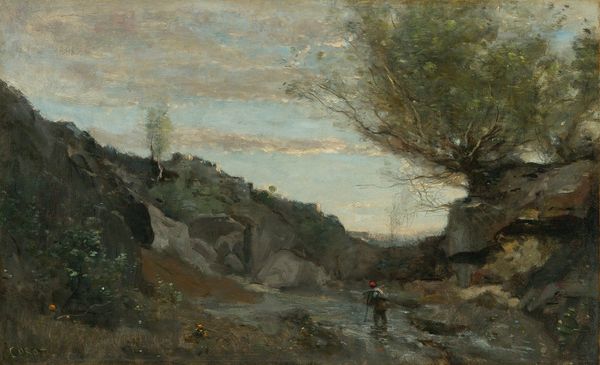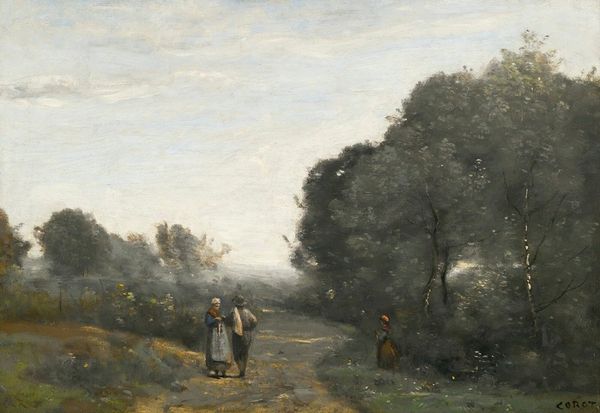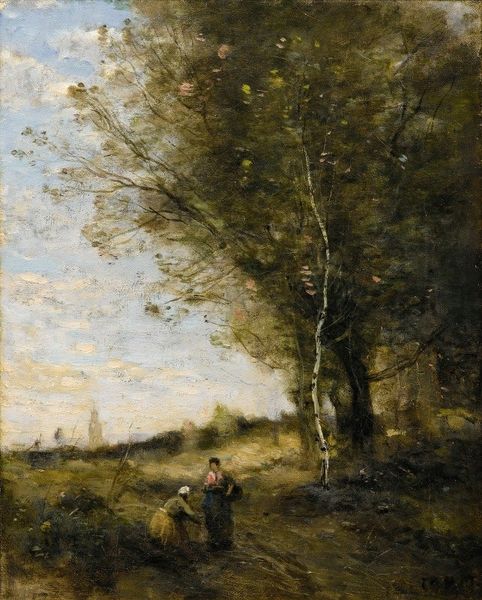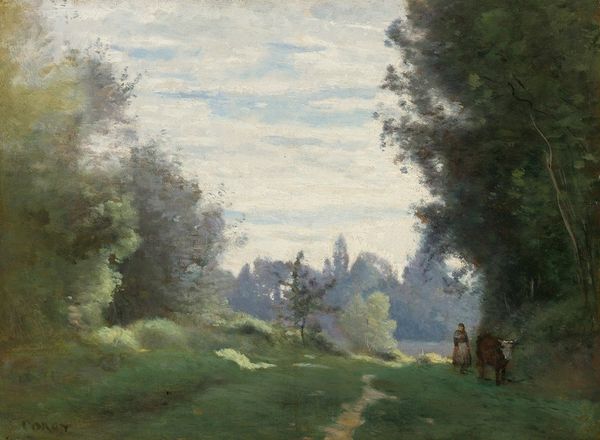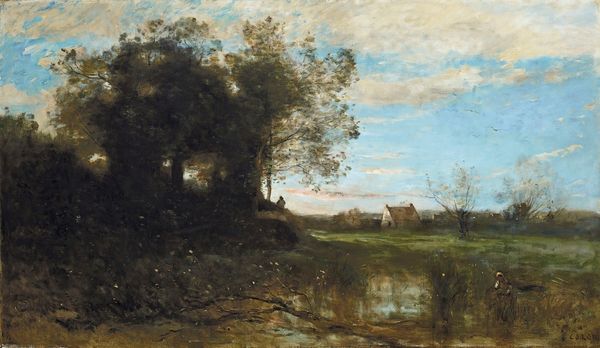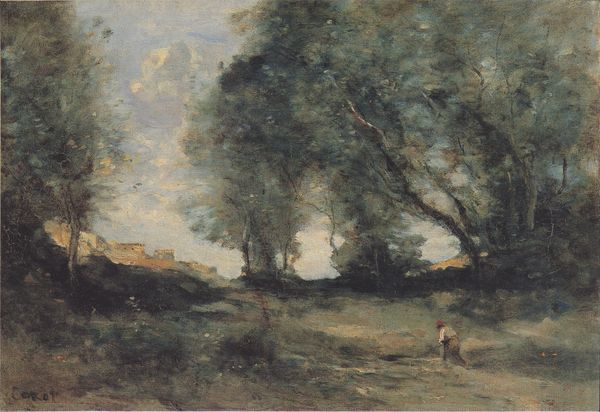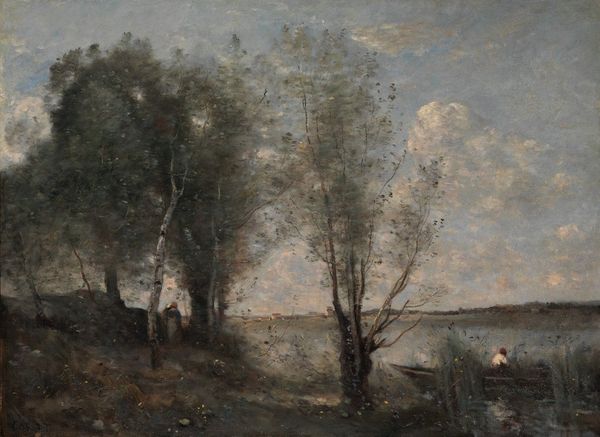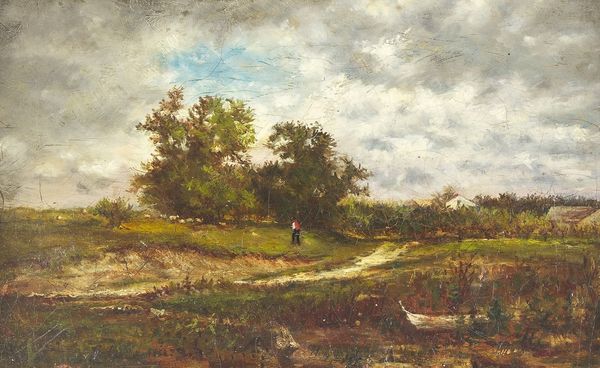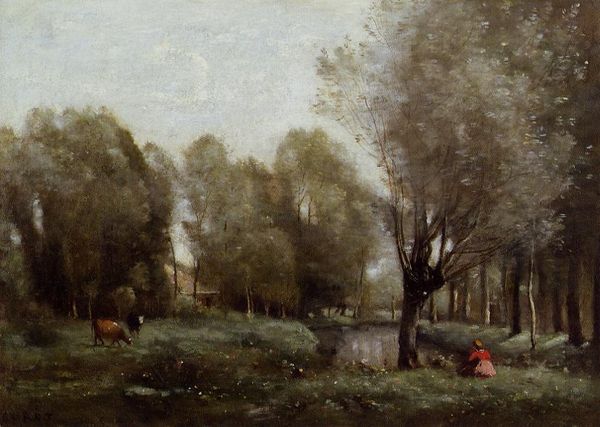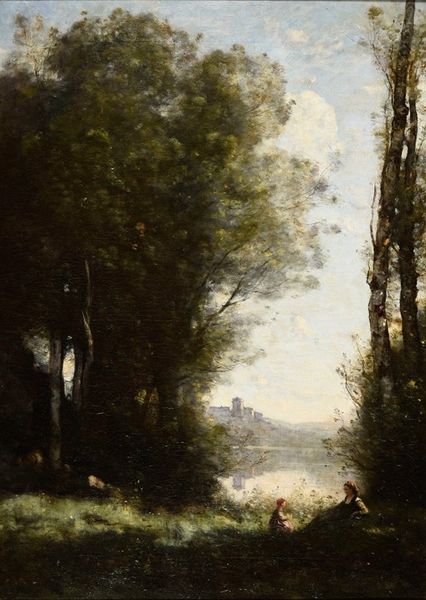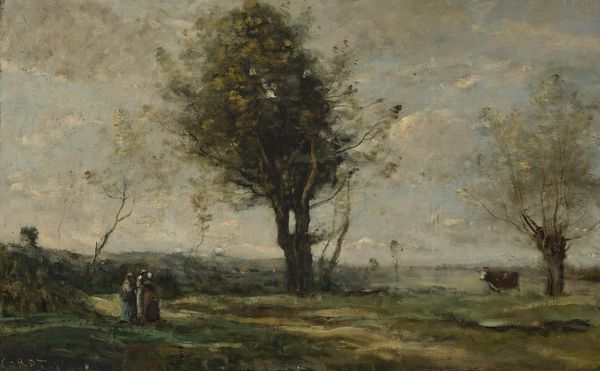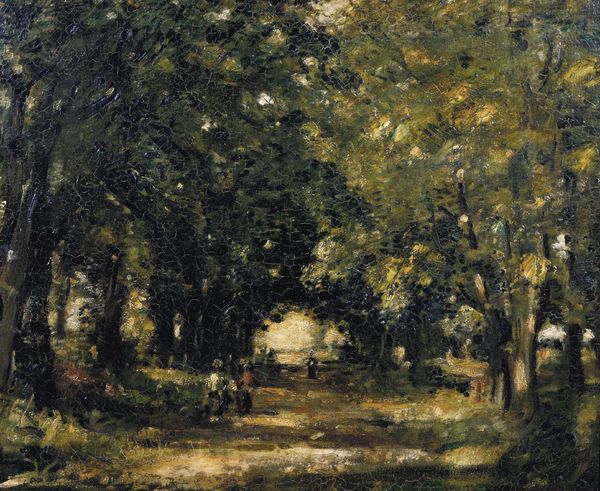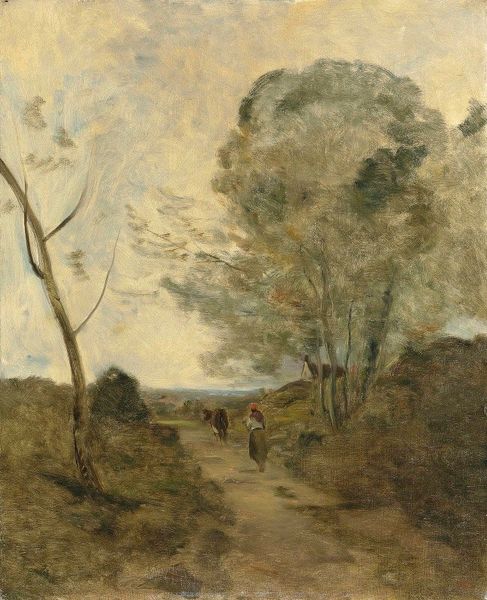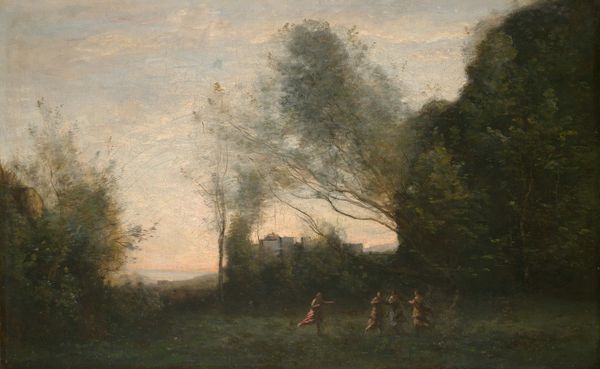
Copyright: Public Domain: Artvee
Editor: This is Camille Corot’s "Semur, Le Chemin De l’église," painted around 1855 to 1860, using oil paints. It’s such a tranquil landscape. I'm really drawn to how Corot captures the light filtering through the trees and the sort of subdued colours he's chosen. What's your take on this piece? Curator: What strikes me about Corot’s landscape is its positioning within a broader dialogue about the role of nature and the representation of rural life during the mid-19th century. Considering that Corot painted this “en plein air”, doesn’t the setting itself seem very carefully constructed? Almost theatrical? Editor: I see what you mean. The composition definitely guides my eye to that distant church. So you think there is something socio-political intended in a landscape such as this? Curator: I believe so. While it presents a seemingly untouched view of the French countryside, it subtly reinforces certain social hierarchies. Note how the peasant woman, placed in the foreground, is scaled and framed in relation to the imposing church in the background. Editor: Oh, wow. Now that you mention it, it does feel like a statement about the social order of the time, even if subtle. Almost a sanctioned world, if you will? Curator: Exactly. And this image circulates, legitimizes a status quo. So, by depicting this scene, Corot engages with and, to some extent, perpetuates certain power dynamics present within French society at that time. Editor: That’s fascinating. I wouldn’t have considered that at first glance. Thanks for providing the insights into the historical framework influencing not only the work but the culture that embraced the piece as well. Curator: You're welcome! Considering art in its socio-political and cultural contexts can reveal such depth.
Comments
No comments
Be the first to comment and join the conversation on the ultimate creative platform.
